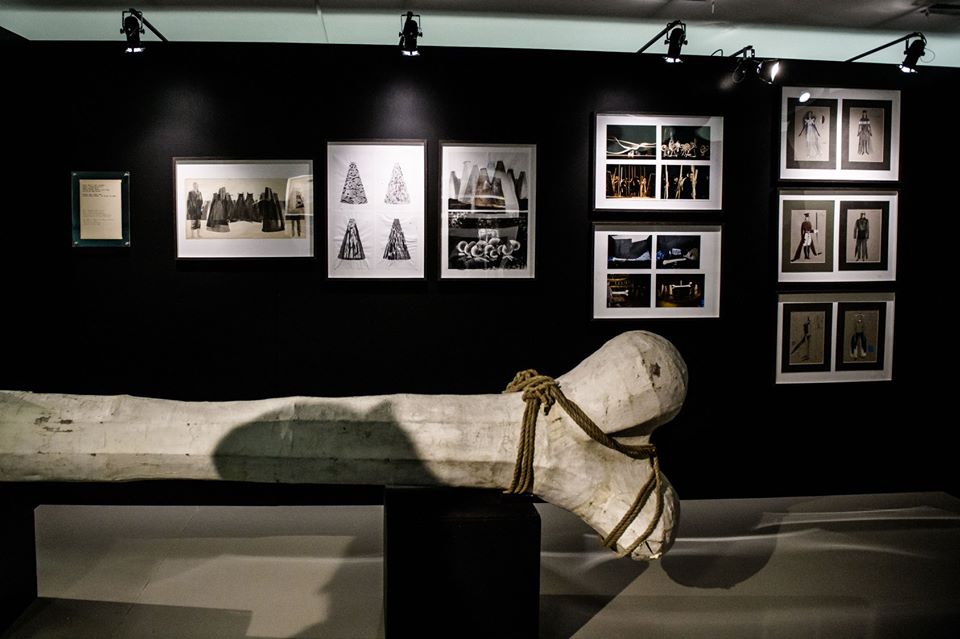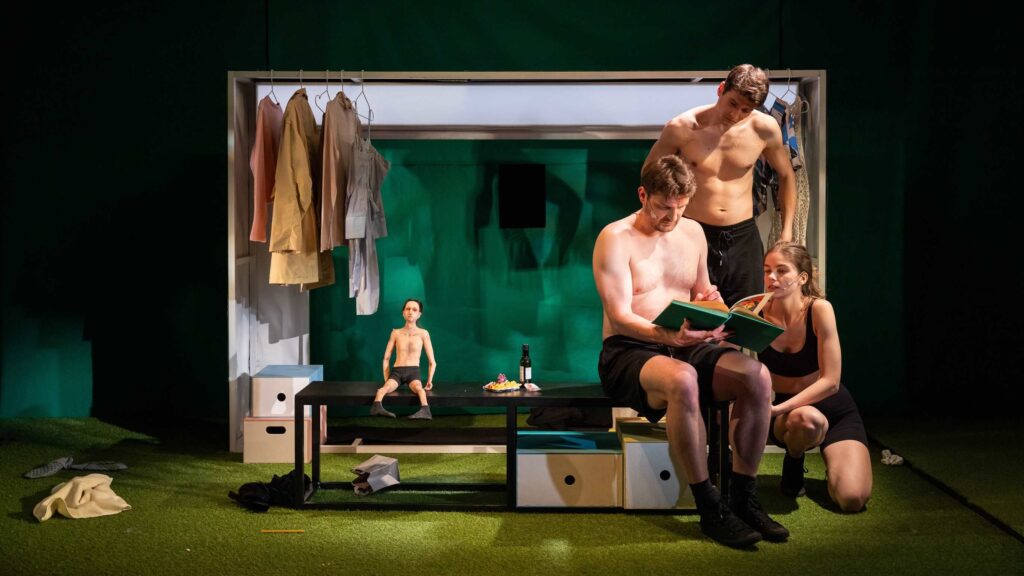The November of 2019, wind. It's been a year since Eimuntas Nekrošius passed away. Before his death, he gave an interview about his performance Forefathers' Eve (Polish Dziady) staged at the National Theatre in Warsaw. In the interview, he mentioned that, “All Souls' Day has been a fun holiday since my childhood.” This November, the exhibition Meno Fortas of Eimuntas Nekrošius (Lith. Eimunto Nekrošiaus Meno fortas) was opened at the National Gallery of Art in Vilnius. The exhibition has already visited Naples, Lublin and Saint Petersburg. The exhibition is like Nekrošius's symbolic All Saints' Day dedicated to the audience left without the director; it brings us closer to the point he kept talking about, “And that final point is the most valuable in human being's life. We'll all experience that point. And how will we behave?” So, how will those who remain - have remained - behave? And they do behave: they arrange exhibitions (exhibition designer Audrius Jankauskas, architect Marius Nekrošius, curators Audronis Liuga and Julija Reklaitė), memorial weeks, the life after. In other words, they are deleting that point and finishing off with an ellipsis that Nekrošius found so difficult to master.
The exhibition displaying the elements of the set designs created by Nadežda Gultiajeva and Marius Nekrošius, drawings, sketches, costumes, director's quotations and the photos from personal archives reminds of a small room used for bidding farewells or of a tiny rehearsal hall where such farewells are only practiced without giving them too much significance.
At first glance, such exhibition size seems really confusing compared to the vast ocean that Nekrošius used to offer us. However, while walking back and forth, from a portrait to a drawing, from a quotation to an item, you begin to understand - it is visual silence dubbed with several breathing cycles that suits this great artist. Sparse things, long spacious pauses among them and barely audible Hamlet-like dripping of water onto the drum - permeating the entire exhibition and eventually getting under visitors' skin - constitute that “silence,” which “puts everyone and everything to their place.” And indeed, everything is silenced and in their place here: Hamlet's drum, the Ghost's coat, a circular saw blade suspended above the Father's chair, Faust's bone, Othello's troughs and canisters, Idiot's bed, Macbeth's cauldron, rope, Lady Macbeth's dress, the papal cloak from The Divine Comedy. And a silent, sometimes indistinct portrait of Nekrošius here and there, somewhere lower, closer to earth, whereas his words are placed closer to the sky: quotations about people, “Idiot is just a good man you'd like to meet every day,” and about things that are also like people, “The need for light - you are two. With the lamp...”
Different display levels create special architecture enabling voluminous experience. For instance, the bone from Faust is so long that you have to walk in circles, whereas the coat of the ghost of Hamlet's father is so alluring that you keep coming back to it. There's also a speaker echoing silently under the table that makes you squirm; but if you spend half a day here, you start drawing nearer and nearer to it to have that dripping sound recorded into you; as only something live can drip.
And if you stay even longer, the dark yellow of the lamps and low moving shadows start emerging in the twilight; especially those of the bed, bone, cauldron, saw and, of course, the coat. Especially the coat - the whitest, softest and strangely most fatal exhibition object that eventually makes you want to wrap yourself in it, touch it secretly and feel the texture. Symbolically, it seems that this coat is the new continent of Nekrošius that has naturally turned into the epicentre of the exhibition and the most eloquent soul of this little All Souls' Day. The drum - the same that was used at Hamlet's finale - has been deliberately left for the soul and its little All Souls' Day, only now it is silent and put to its place. That is exactly the spot where it dawns on you - Nekrošius's things cannot be immobile. They don't want to be a part of a landscape; they don't want to be a stone - they were born to be the bodies that aren't part of reality but rather reality itself. Therefore, there's a feeling that they don't belong here - it's better for them to cease existing than to be placed like that.
When Nekrošius passed away, I wrote to myself: Forefathers' Eve - that will most probably be remembered as the last performance seen before the director's passing - is no longer a performance. It's the waving of a tin sheet upon leaving; it's a huge poppy sowing death with every single seed; it's love resonating globally rather than personally, as if standing in the forest of humanity where pits, trees and poppies reiterate the conversation between the mortal and the dead infused with endless longing. Indeed, Eimuntas Nekrošius was that wild, colourless poppy that grew higher and higher in the forest of humanity. To me, Nekrošius's myth was not about theatre but about modest, silent humanness of the genius. He was never one of directors - he had his own land here, where he acted like a silent, humble god. And, of course, Nekrošius would never approve of such a description - he was just a man who did his job; perhaps even the simplest one from all us who remain here; perhaps there's no such other simple man.













